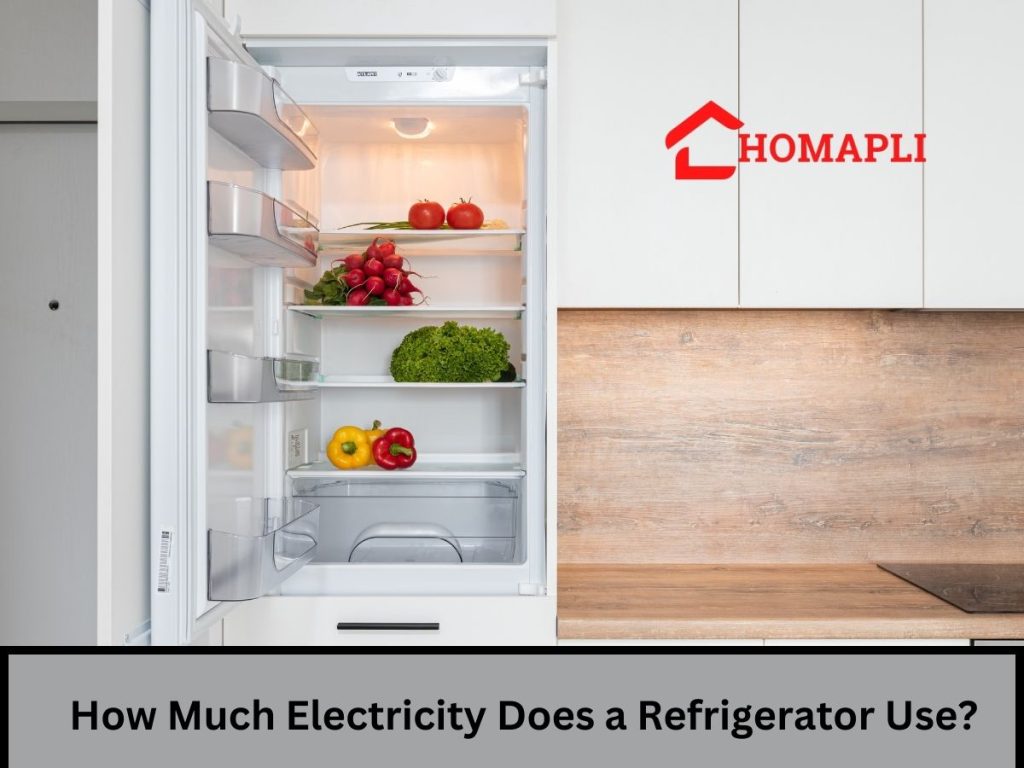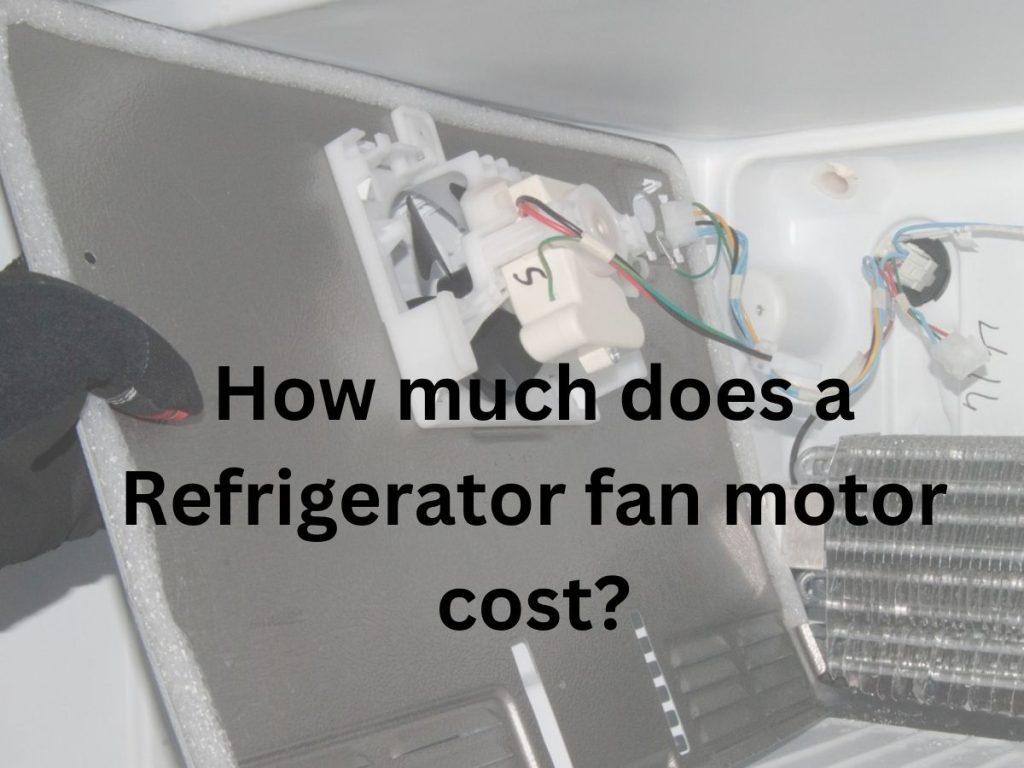In a world where sustainability is at the forefront of our collective conscience, the demands we place on our home appliances warrant careful consideration. Among these, the refrigerator stands as a silent sentinel, consuming a significant portion of our household power. “How much electricity does a refrigerator use?” is a question that often arises, reflecting both a growing concern for the environment and a desire to reduce utility bills. Understanding the energy consumption of this indispensable appliance is not just illuminating from an educational standpoint; it empowers us to make informed decisions about energy usage in our daily lives.
- Understanding Refrigerator Electricity Consumption
- Calculating Your Fridge’s Electricity Usage
- Energy-Efficient Refrigeration Practices
- The Role of Refrigeration in Household Electricity
- Potential Electricity Savings with Refrigeration
- In Conclusion: The Cool Reality of Your Refrigerator’s Electricity Consumption
- Frequently Asked Questions About Refrigerator Electricity Consumption
Understanding Refrigerator Electricity Consumption
Before we unravel the complexities of your refrigerator’s electrical metabolism, it’s important to establish a baseline. The fridge, like all electrical appliances, munches on a diet of watts (W), joules per second being its preferred meal. Understanding the electricity consumption of appliances such as fridge involves a mix of technical specs, usage patterns, and energy tariffs.
The Anatomy of Electricity Usage
The power consumption of a refrigerator depends on several factors:
Size and Type of Refrigerator
Larger fridges, which have more space to cool and maintain colder temperatures, generally use more electricity. Side-by-side and French door models are typically more energy-efficient than top freezers and bottom-freezers, as they afford better compartmentalization of temperature zones.
Age and Condition
Older fridges often draw more power due to out-of-date cooling mechanisms and less insulation. Regular maintenance, such as door seal checks and condenser coil cleanings, can keep the machine running efficiently.
Energy Star Ratings
Appliances sporting the blue tag are certified to be energy-efficient. However, even within this spectrum, there can be variances. Some Energy Star models may still use more power than others due to their features and intended use cases.
Usage Patterns
How often you open your fridge and, more importantly, for how long, can significantly impact its power consumption. Frequent openings can cause the fridge to work harder to maintain its internal temperature.
Location
Environmental factors, like the ambient temperature around the refrigerator, can affect its power consumption. If the room is significantly warmer than the refrigerator’s set internal temperature, it will need to work harder to keep its contents cool.
Calculating Your Fridge’s Electricity Usage
Interested in getting a specific read on how much electricity your refrigerator uses? Here’s how to calculate it:
Step 1: Gather Your Fridge’s Specs
Find the label inside your fridge that details the manufacturer, model number, and key electrical measurements like the voltage (V), current (A), and power (W).
Step 2: Determine the Power Consumption
Some essential calculations will be needed. For instance, if your fridge operates at 120V and 5A, the basic formula for power (P) in watts is:
P (W) = V (V) × I (A)
Which means in this case:
P (W) = 120V × 5A = 600W
Step 3: Total Daily Consumption
Now, you need to estimate how long your fridge runs each day. To do this, you can use a power meter or simply note down the time it is running over a day.
Step 4: Monthly Electricity Consumption
Multiply the daily consumption by the number of days in a month to derive a monthly figure. For instance, if the daily usage estimate is 12 hours:
Daily Consumption = 600W × 12 hours = 7,200 watt-hours (Wh)
Monthly Consumption = 7,200Wh/day × 30 days = 216,000Wh or 216 kilowatt-hours (kWh)
For most households, refrigeration is one of the most significant contributors to the monthly electric bill.
Energy-Efficient Refrigeration Practices
Now that you’ve unfurled the scroll of your fridge’s potential power pull, it’s time to look at ways to reel it in. Here are several habits and tweaks that can improve your refrigerator’s energy efficiency.
Optimal Temperature Settings
The ideal refrigerator temperature is believed to be about 37°F (3°C), while the freezer should be at 0°F (-18°C). Any colder, and you’re wasting electricity; any warmer, and your food may spoil prematurely.
Minimize Frost Build-Up
If you see a substantial layer of frost covering the interior walls of your freezer, it’s time for a defrost. Frost acts as insulation, forcing the appliance to use more energy to maintain the correct temperature.
Ventilation Is Key
Your fridge needs adequate space around it to ventilate properly. Be sure there’s enough space behind and on the sides to allow heat to escape.
Fill It Up
A full fridge holds the cold better, cutting the on/off cycling that happens as it maintains temperature when the door is closed.
Replacement and Repairs
Upgrade to a newer, more efficient model if your refrigerator is nearing the end of its lifespan. For current models, repair or replace the seals, and clean the condenser coils at least annually to keep everything running smoothly.
The Role of Refrigeration in Household Electricity
The refrigerator’s significance in the household electricity ecosystem cannot be overstated. It’s typically one of the top consumers, especially when it comes to continuous usage. Here’s a look at how the fridge stacks up against other common household appliances.
| Household Appliance | Average Energy Consumption (per year) |
- 60-Watt Incandescent Light Bulb | 328 kWh |
- Desktop Computer (in standby) | 100 kWh |
- Dishwasher (when used daily) | 250 kWh |
- Clothes Dryer (electric) | 1,076 kWh |
- Refrigerator (Energy Star-rated, 18 cu. ft.) | 350 kWh |
- Air Conditioner (central, medium efficiency) | 1,774 kWh |
The refrigerator’s numbers are eclipsed only by major culprits like air conditioners and clothes dryers, emphasizing the need for its careful usage and efficiency enhancement.
Potential Electricity Savings with Refrigeration
By implementing the aforementioned practices, you can save a significant amount on electricity over the lifetime of your refrigerator.
Potential Long-Term Savings
A high-quality, well-maintained refrigerator can save you hundreds of dollars over the years. And with technological advancements leading to more efficient compressors and insulation materials, newer models are savings champions compared to their older cousins.
Short-Term Savings Strategies
In the shorter term, adjusting your usage patterns and location can lead to noticeable reductions in your monthly electricity bill. Strategies like grouping your fridge contents for more efficient opening and closing or ensuring the fridge doesn’t have to work in an excessively heated environment can have immediate benefits.
In Conclusion: The Cool Reality of Your Refrigerator’s Electricity Consumption
The humble refrigerator’s energy consumption is a testament to the intricacies of our modern lives. It serves as a balance between technological advancement and personal stewardship. By understanding how it harnesses power and how we can mold it to our needs, we simultaneously fortify our wallets and the environment.
This eternal dance between the fridge’s mechanical digestive system and our dining demands is a choreography worth mastering. One flip of a switch has implications that ripple through our day-to-day routine and our planet’s well-being. To ignore it is to turn a blind eye to an opportunity for better conservation and consumer wisdom. But to conquer it is to be in charge of a frigid force that is essential, efficient, and increasingly within our control.
With countless blogs and infographics clamoring for your attention, it’s rare to find content that’s both informative and actionable. We’ve tried not just to crunch the numbers but to give you a practical guide to turning down the dial on your refrigeration expenses. It’s a quest well worth the energy – or should we say the reduction in energy? – because with each careful tweak, you’re closing the door on waste and opening up a world of ecological and economic benefits.
Are you ready to take charge of your refrigerator’s energy consumption? It’s a challenge as crisp and invigorating as the first bite of a perfectly chilled apple. And the rewards? A lifetime supply of savings that stack up higher than those neatly organized Tupperware containers on your shelves. It’s time to make the smart choice for both your home and the planet.
Frequently Asked Questions About Refrigerator Electricity Consumption
Now that we’ve traversed the frigid wastelands of refrigerator electricity usage, you might have a snowclad peak of queries. Here are some commonly asked questions to demystify your fridge’s frozen fables.
This depends on your usage patterns and how long ‘not in use’ actually means. For a refrigerator left unused for months, like in a second home, this might be beneficial to reduce standby energy usage. For everyday use, however, it’s better to leave it plugged in, as the food inside needs to stay cool, and frequent cycling on and off can cause spikes in energy usage.
Yes, older refrigerators tend to use more electricity. Over time, the efficiency of the compressor and insulation may degrade, leading to increased power consumption.
Watts are a measurement of power (energy per unit time), while kWh represents energy consumption over time. For example, if an appliance uses 2,000W and runs for an hour, it consumes 2,000Wh, or 2kWh.
In most cases, yes. Energy Star models generally use less energy than non-rated models. While they may come with a slightly higher upfront cost, the savings from reduced energy bills can often justify the investment.


